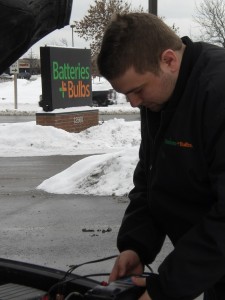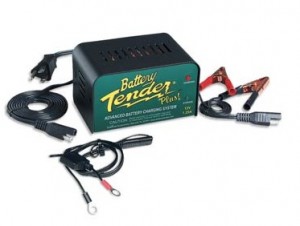Keeping Batteries Fresh
Power - by David Neubert - updated on 1/31/2014
Ever been stranded due to a dead car battery? If you have, then you know how utterly hopeless it can feel to be stuck somewhere when your car won't start. Maybe you were fortunate enough to have access to jumper-cables or a handy jump pack, but if you weren't, then, odds are, you spent what felt like an eternity waiting for a tow or roadside-assistance reviewing exactly how you would avoid this situation from ever happening again.
Here are some helpful hints to consider to increase the overall performance and lifespan of your car, or SLI (starting, lighting, ignition), battery:
- Store your car in a protected environment – An insulated garage for winter month storage is ideal, while keeping it a little cooler in the summer is a good idea, too. Do you know which is worse for a battery, the cold or the heat? The heat! Read more about ways to protect your batteries in hot weather.
- Keep the connecting points and terminals clean – Corrosion, grease and dirt can impede the flow of energy, affecting the charge used to start your vehicle, as well as the return charge placed back into the battery. Use an anti-corrosion cleaner and wire brush to clear these areas on the battery, but be sure to wear the proper eye and hand protection.
- Avoid extreme vibration – Constant jiggling and jostling of a loose battery increases the risk of damage to the battery plates and the potential for acid to spill in the engine compartment. Be sure the battery is secured using proper hold-downs.
- Regular use – Drive your vehicle regularly, have it serviced regularly, charge it regularly, and avoid draining it by leaving electronic accessories 'on' when the car is 'off'.
- Have your battery tested – If your battery is getting close to the 5-year mark, or you think it's not holding its charge the way it should be, stop in at any of our over 720 Batteries Plus Bulbs locations to get its levels tested for free.
- If you're unable to drive your car regularly, you should definitely plug it into a maintenance charger when it's not in use

Evin Prelec, Director of Marketing and Advertising for Battery Tender, notes that her company's chargers take the guesswork out of charging car batteries:
"If you don't drive your car on a daily basis, you should definitely plug it into a charger whenever you can. Our chargers will automatically change from a charge mode to a maintenance voltage once the battery reaches an ideal level; keeping it there, without overcharging it. You can just plug it in and walk away. Just like you plug in your cell phone at night, we recommend you do the same with your car to increase the overall lifespan of your battery."

Furthermore, these chargers adjust their voltage levels to react to harsh cold or warm temperatures, too. Plus, they guard against sulfation, which, in many situations, can end up destroying a battery over time, due to damage caused to the plates and creating resistance.
"If a person chooses to maintain a battery from the moment they get it, by charging it regularly and following these simple tips, sulfation likely won't ever occur," continues Prelec.
Did you know that an idle battery can lose roughly 3% of its charge in a week? That's why it's important to always attach your unused SLI batteries to a maintenance charger when they're not in use for an extended period of time.
How to Jump Start a Car – A Quick Refresher
The following steps should be followed exactly:
- Connect positive (+ = Red) booster cable to positive (+) terminal of discharged battery.
- Connect other end of positive (+) cable to positive (+) terminal of assisting battery.
- Connect negative (- = Black) cable to negative (-) terminal of assisting battery.
- Make final connection of negative (-) cable to egine block of stalled vehicle, away from battery and carburetor.
- Be sure that cables are clear of fan blades, belts and other moving parts of both engines.
- Start vehicle and remove cables in reverse order of connections.
- Warning - never connect batteries of different chemistries or voltage, and make sure vehicles are not touching or turned on when hooking up cables!

